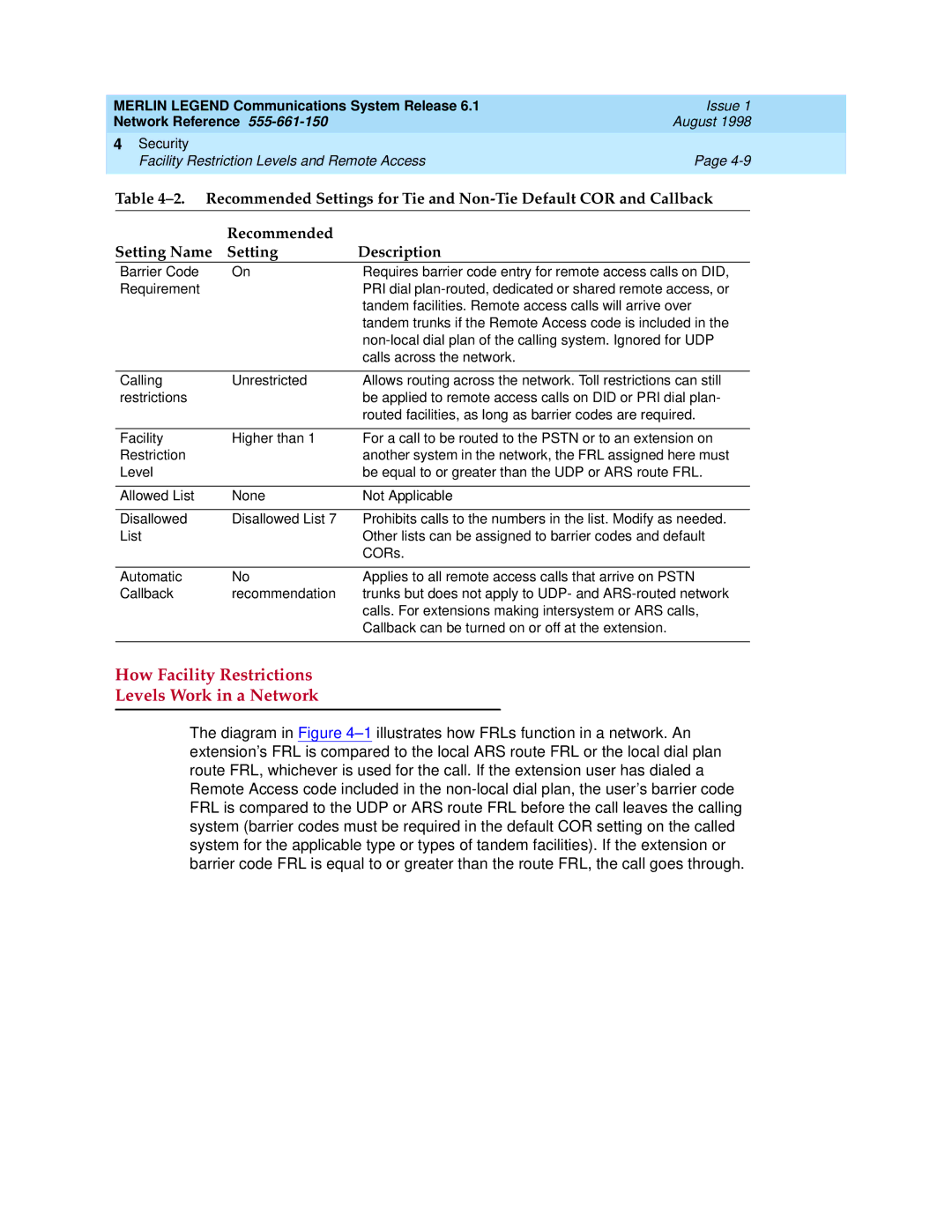MERLIN LEGEND Communications System Release 6.1 | Issue 1 |
Network Reference | August 1998 |
4 Security |
|
Facility Restriction Levels and Remote Access | Page |
|
|
Table
| Recommended |
|
|
Setting Name | Setting | Description | |
Barrier Code | On | Requires barrier code entry for remote access calls on DID, | |
Requirement |
| PRI dial | |
|
| tandem facilities. Remote access calls will arrive over | |
|
| tandem trunks if the Remote Access code is included in the | |
|
| ||
|
| calls across the network. | |
|
|
| |
Calling | Unrestricted | Allows routing across the network. Toll restrictions can still | |
restrictions |
| be applied to remote access calls on DID or PRI dial plan- | |
|
| routed facilities, as long as barrier codes are required. | |
|
|
| |
Facility | Higher than 1 | For a call to be routed to the PSTN or to an extension on | |
Restriction |
| another system in the network, the FRL assigned here must | |
Level |
| be equal to or greater than the UDP or ARS route FRL. | |
|
|
| |
Allowed List | None | Not Applicable | |
|
|
| |
Disallowed | Disallowed List 7 | Prohibits calls to the numbers in the list. Modify as needed. | |
List |
| Other lists can be assigned to barrier codes and default | |
|
| CORs. | |
|
|
| |
Automatic | No | Applies to all remote access calls that arrive on PSTN | |
Callback | recommendation | trunks but does not apply to UDP- and | |
|
| calls. For extensions making intersystem or ARS calls, | |
|
| Callback can be turned on or off at the extension. | |
|
|
| |
How Facility Restrictions |
|
| |
Levels Work in a Network | 4 | ||
|
|
|
|
The diagram in Figure
